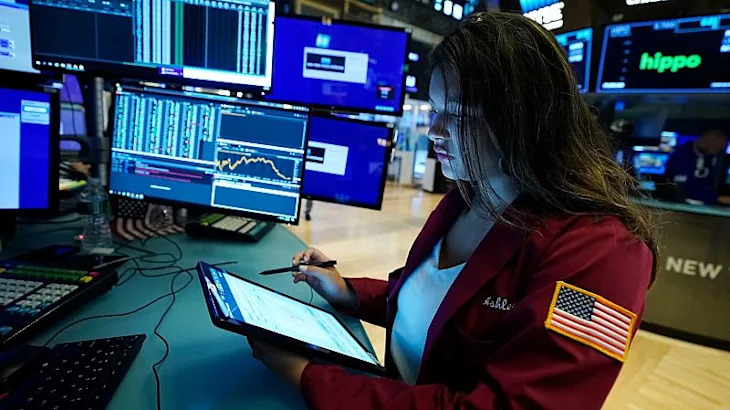
US stocks remain volatile as bank earnings fail to cheer investors
US stocks were shaky on Friday as Wall Street’s monstrous week heads toward its close, while the rising price of gold, falling value of the US dollar and moves in other financial markets indicate more fear as President Donald Trump's trade war with China escalates.
The S&P 500 index was down 0.4% in early trading, a continuation of the sharp slide that erased a big chunk of its historic gains from the middle of the week, after Trump paused tariffs on many countries outside of China.
The Dow Jones Industrial Average was down 232 points, or 0.6%, as of around 3:35 pm CEST, and the Nasdaq composite was 0.1% lower.
Such modest moves, though, are hardly assured to last through the day if recent history is a guide. Stocks have been swinging not just day to day but hour to hour as investors struggle to make out where Trump’s trade war is heading and whether it will cause a global recession.
China announced on Friday that it was boosting its tariffs on US exports to 125%. This is to counter the US recently imposing a 125% tariff on China, on top of its existing 20% levy.
“The US alternately raising abnormally high tariffs on China has become a numbers game, which has no practical economic significance, and will become a joke in the history of the world economy," a Finance Ministry spokesman said in a statement announcing the new tariffs.
“However, if the US insists on continuing to substantially infringe on China’s interests, China will resolutely counter and fight to the end," he added.
Such rising tensions between the world’s two-largest economies can cause widespread damage for the world, even after Trump announced a 90-day pause on some of his tariffs for other countries.
Gold sees boost in demand, US Treasury yields soar
The price of gold rose more than 2% to $3,250 per ounce following the latest escalation. Gold is typically considered a safe haven asset, which sees increased demand during times of economic and political uncertainty.
Other assets that have historically been seen as safe havens aren’t seeing the same wave, though. The value of the US dollar fell again against everything from the euro to the Japanese yen to the Canadian dollar.
Prices for longer-term Treasury bonds, which are essentially IOUs from the US government, also fell. This is at odds with historical trends, where Treasuries had long been seen as one of the safest possible investments.
The drop in prices for Treasuries in turn sent their yields higher, because investors are essentially demanding to get paid more for the risk of holding them. The yield on the 10-year Treasury rose to 4.50% from 4.40% late Thursday and from just 4.01% at the end of last week.